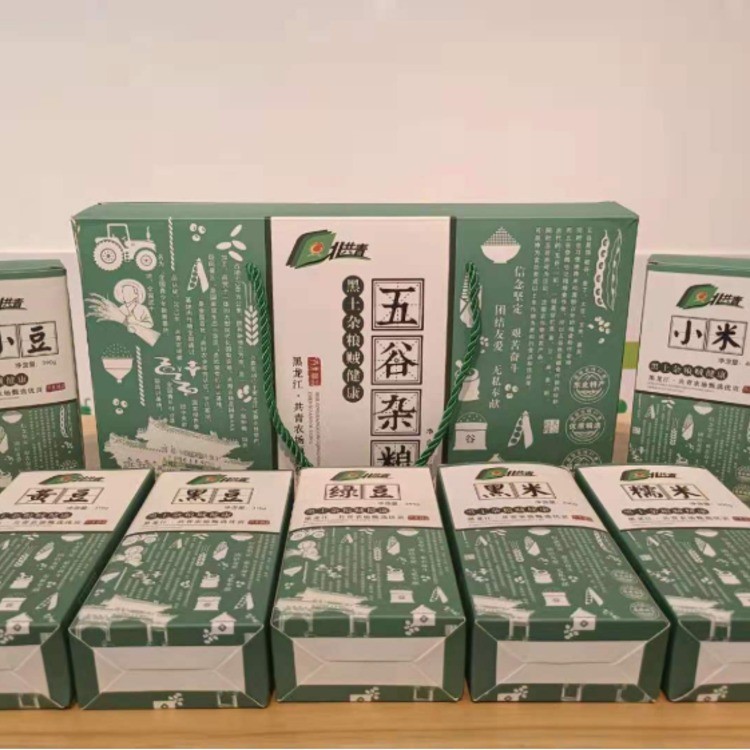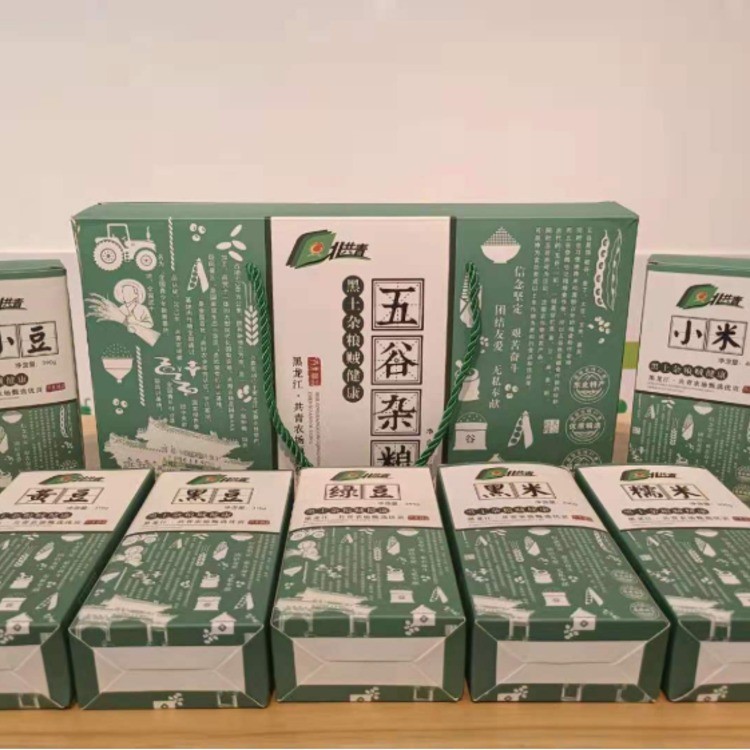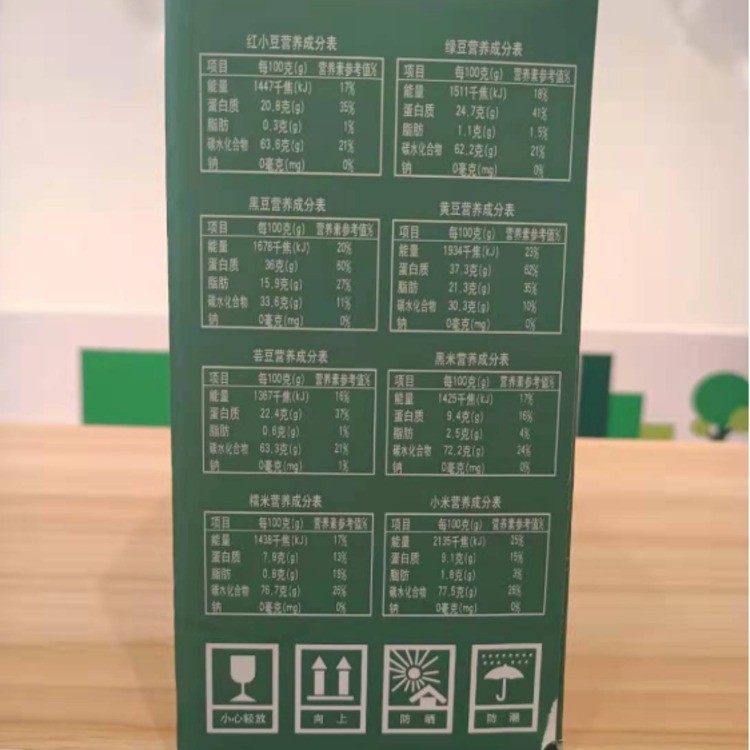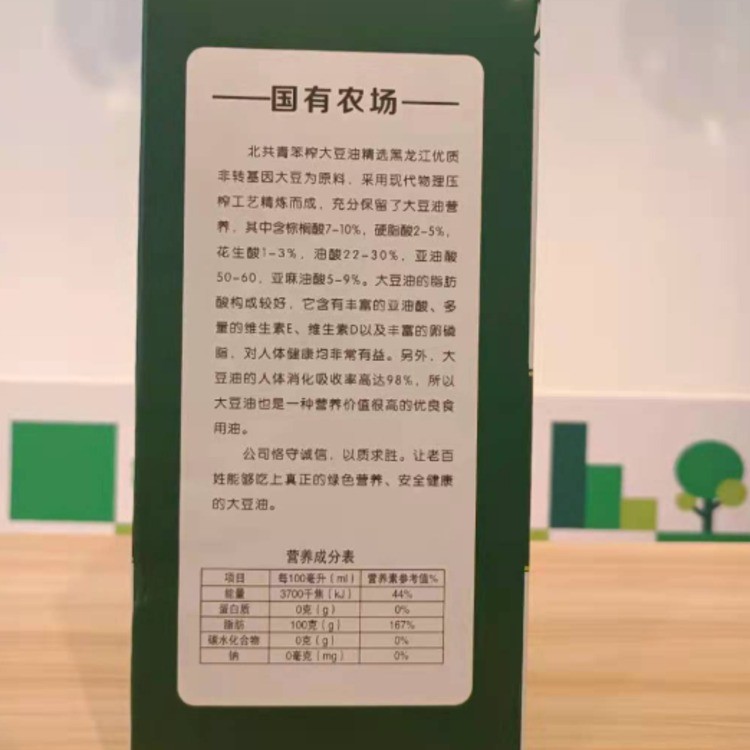
     |
|
Introduction to whole grains
The earliest record of the term "Wugu" can be found in "The Analects". According to the "Analects of Confucius" record: more than 2,400 years ago, Confucius took the students out on a long journey. Zilu was left behind. He met an old farmer who carried a bamboo basket with a stick and asked him, "Did you see the Master?" The old farmer said: "If the limbs do not work, and the grains can't be distinguished, who is the master?"
Five grains means five kinds of grains, but when the term five grains was created, there is no record of what exactly it refers to. Although the concept of grains has been in existence for more than two thousand years after its formation, the status of these food crops in the country's food supply varies from time to time. The millet, millet and other crops in the grains have the characteristics of drought tolerance, barren tolerance, and short growth period, so they occupy a particularly important position in the original cultivation of dry land in the north.
Introduction
1. Kidney beans of whole grains. Commonly known as second season beans or string beans, it belongs to the leguminous Phaseolus vulgaris. Kidney beans are suitable for planting in temperate and tropical high-altitude areas, and are more resistant to cold and light, which are cross-pollinated beans and short-day crops. Kidney beans are rich in nutrition. Per 100g kidney beans contain 23.1 grams of protein, 1.3 grams of fat, 5.9 grams of carbohydrates, 6.9 grams of kidney beans, 76 mg of calcium and rich B vitamins. Fresh beans are also rich in vitamin C.
2. Red bean of whole grains. Also known as red bean, red bean, red bean, five-color bean, rice bean, rice bean. Chinese adzuki beans are mainly distributed in North China, Northeast China, the Yellow River and the middle and lower reaches of the Yangtze River. The planting area is larger in Henan, Hebei, Beijing, Tianjin, Shandong, Shanxi, Shaanxi and Northeast China, followed by Anhui, Hubei, Jiangsu and Taiwan. The other provinces, cities, and districts have small planting areas or sporadic planting.
3. Black beans of whole grains. Leguminous plant soybean black seeds. Also known as black beans and black beans, they are sweet and flat. Black beans are high in protein and low in calories. The surface is black or gray-black, smooth or with zou lines, shiny, and has a pale yellowish white oblong seed navel on one side. The content of trace elements in black beans such as zinc, copper, magnesium, molybdenum, selenium, fluorine, etc. are very high, and these trace elements are very important for delaying human aging and reducing blood viscosity.
4. Mung beans of whole grains. Also known as green bean, named for its green color, it is the mature seed of legume herb mung bean, which has been cultivated in China for more than two thousand years. The pharmacological effects of mung bean are lowering blood fat, lowering cholesterol, anti-allergic, anti-bacterial, anti-tumor, enhancing appetite, protecting liver and kidney. It is the traditional legume food of the Chinese people. The protein content of mung bean is almost three times that of japonica rice, and there are more vitamins, calcium, phosphorus, iron and other inorganic salts than japonica rice.
5. Glutinous rice of whole grains. Glutinous rice is called glutinous rice in the south of my country, and Jiangmi in the north. It is divided into long glutinous and round glutinous rice. Round glutinous rice, grown in the north, belongs to japonica glutinous rice. It has a short round shape, white opaque, sweet and greasy taste, and its viscosity is slightly lower than that of long glutinous rice. It is suitable for making zongzi, fermented rice dumplings, rice dumplings, and rice.
Glutinous rice is mainly used to make sticky snacks, such as rice dumplings, glutinous rice cakes, glutinous rice balls, rice cakes, and various desserts. It can also be used to make glutinous rice grains and sweet rice wine.
Glutinous rice is sweet in taste and warm in nature. It enters the spleen, stomach and lung meridians. It has the functions of invigorating the middle and nourishing qi, nourishing the stomach and invigorating the spleen, solidifying the surface and antiperspirant, antidiarrheal, anti-fetus, detoxification and sores. It has food and nourishment effects on deficiency and cold stomachache, stomach and duodenal ulcers, diabetic polyuria, qi deficiency and spontaneous sweating, acne, carbuncle and furunculosis. , Especially suitable for pregnant women, weak, diarrhea, spleen and stomach deficiency.
6. Soybeans of whole grains. Soybeans and their products have special effects on the cardiovascular system. Regular consumption of soy foods can effectively lower serum cholesterol and help relieve the damage that has been suffered by arterial walls. Some scholars have found that soybeans soaked in vinegar can be used to treat high blood pressure and obesity. Because the saponin in soybeans can eliminate the fat attached to the blood vessel wall and reduce the cholesterol content in the blood.
7. Black rice of whole grains. Black rice is a treasure of rice, known as "medicine rice", "black pearl", "blood-tonifying rice", and "longevity rice". Therefore, there is a saying in our country that "every blackness must be replenished". This kind of strange rice discovered by Zhang Qian, the pioneer of the Silk Road, was dedicated to Emperor Wu of the Han Dynasty. After the King of the Han Dynasty, he praised it as "sacred rice". Since then, it has been enjoyed by the emperors of all dynasties.
Its main nutrients include crude protein, crude fat, carbohydrates, and crude ash. The content of vitamins, trace elements and amino acids is higher than that of ordinary rice. It also contains a variety of vitamins and essential trace elements such as zinc, iron, molybdenum, and selenium.
Since ancient times, black rice has been regarded as a good nourishing health product.
Traditional Chinese medicine believes that black rice has the effects of nourishing yin and kidney, invigorating the spleen, warming the liver, improving eyesight and promoting blood circulation. It can treat various diseases such as anemia, dizziness, blurred vision, and early gray hair.
Modern medicine has confirmed that the darker the color of rice, the more obvious the anti-aging effect of epidermal pigment, and the effect of black rice pigment is the strongest among rice of various colors, which is 5 times as much as that of white rice. It is effective in preventing arteriosclerosis. Great effect. In addition, the potassium, magnesium and other minerals in black rice are also beneficial to control blood pressure and reduce the risk of cardiovascular and cerebrovascular diseases.
Therefore, patients with diabetes and cardiovascular disease can consume black rice as part of the spring diet. And healthy people can also use black rice to achieve the purpose of spring health care.
8. Millet of whole grains. Millet grains are small, light yellow or dark yellow in color, hard in texture, and the finished product has a sweet fragrance. Many women in northern my country have the tradition of using millet and brown sugar to nourish their bodies after giving birth. Millet porridge is rich in nutrients, and has the reputation of "Ginseng Soup". Efficacy and function of millet: prevent indigestion, reduce bacteria, prevent fluid, nourish yin, remove spots and beautify.

 Instant Messaging
Instant Messaging Video Call
Video Call

